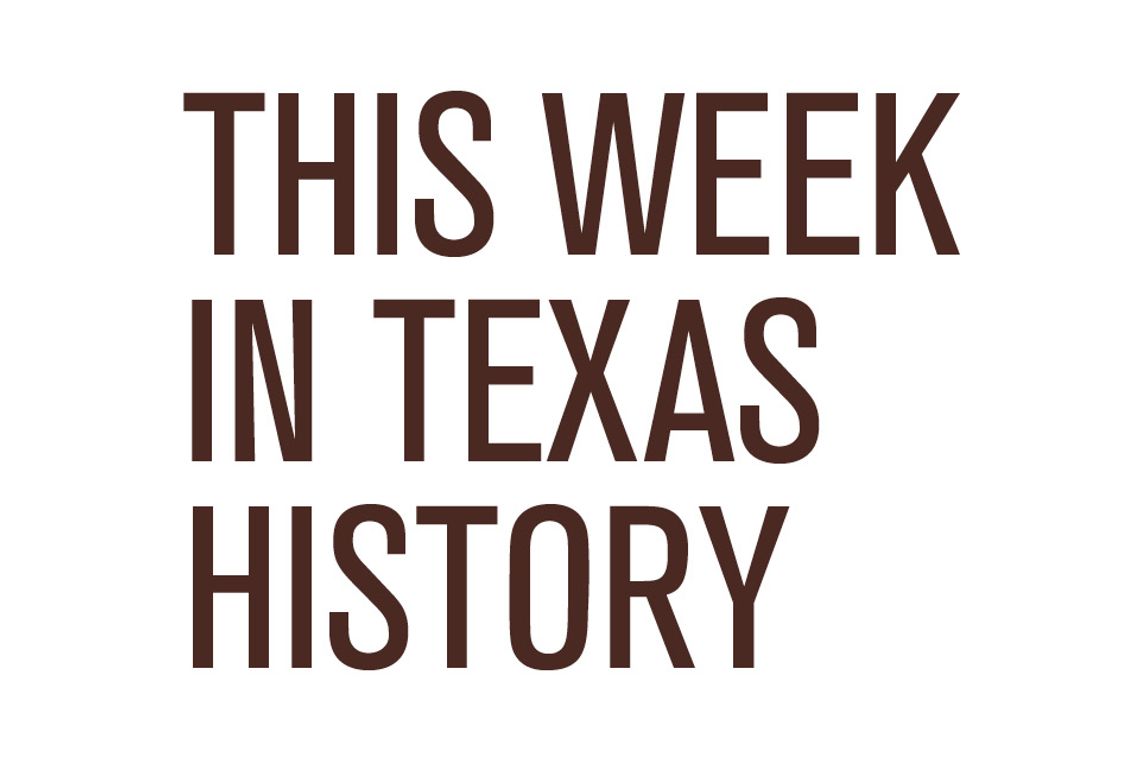Texas History
by Bartee Haile
“White Lightning” climbed to the top of the country music chart on May 10, 1959 giving George Jones the first of ten Number One hits in a phenomenal career that spanned six decades.
George Glenn Jones was born in 1931 on the southern edge of the Big Thicket at a wide spot in the road called Saratoga. He would grow up in an even smaller community, Colmesneil in Tyler County north of Woodville, with his brother and five sisters.
The head of the family was a sundown-to-sunup drunk, who physically abused his long-suffering wife and terrified children. On one occasion young George never forgot, his intoxicated father woke him up in the middle of the night and demanded that he sing for his barroom buddies or take a beating.
As soon as he turned 16, the youth left that hapless home full of painful memories and never looked back. His first stop was Jasper, where he played his guitar and sang on the local radio station. It was there that he met his idol Hank Williams, when he visited the studio. All the hero worshipper could do was stare not even thinking to introduce himself.
By 1954, Jones had married twice, the second time to Shirley Ann Corley, done a two-year hitch in the Marines and released his first single “No Money In The Deal.” The recording session took place in a house on the highway outside Beaumont under the worst possible conditions.
“We had to stop a lot of times because it wasn’t soundproof,” Jones ruefully recalled. “Just egg crates nailed on the wall and the big old semi trucks would go by and make a lot of noise and we’d have to start over again.”
Producer and early mentor “Pappy” Daily encouraged Jones to develop his own unique sound and to stop imitating Hank Williams and Corsicana native Lefty Frizzell. Initially resistant to the wise advice, in time he took it to heart and reaped the rewards.
During his Beaumont days, a disc jockey began calling him “The Possum,” a none too flattering nickname he never could shake. As a second deejay explained, “He cut his hair short like a possum’s belly. He had a possum’s nose and stupid eyes like a possum.”
The modest hit “Why Baby Why” earned him a place in the cast of the traveling roadshow “Louisiana Hayride” in 1955. That exposure resulted in an invitation the following year to perform at the “Grand Ole Opry.”
Jones gradually made a name for himself with songs like “Yearning” and “Don’t Stop The Music” but played honky-tonks to pay the bills. All that changed in 1959 with “White Lightning” written by J.P. Richardson, “The Big Bopper” who died in the same plane crash that killed Buddy Holly.
Even though Jones always seemed to have a song or two on the charts in the Sixties, he had only a single Number One hit. His personal appearances were consistent sell-outs, but ticket holders never knew whether he would show up.
The same demons that wrecked his father’s life had sunk their claws into Jones. His binge drinking and amphetamine addiction landed him in a psychiatric ward in 1967. The ritual would be repeated several times in the years to follow.
In a famous incident that led to the dissolution of their 14-year marriage, Shirley Corley hid the keys to all the cars, but not the riding lawn mower, before leaving their home eight miles outside Beaumont. Jones wrote about what happened next with unapologetic pride in his autobiography I Lived To Tell It All:
“There, gleaming in the glow, was that ten-horsepower engine under a seat. A key glistening in the ignition. I imagine the top speed for that old mower was five miles per hour. It might have taken an hour and a half or more for me to get to the liquor store, but get there I did.”
Jones’ next choice of wives was Tammy Wynette, a big star in her own right. Overnight the newlyweds were crowned “Mr. and Mrs. Country Music” to the delight of their combined fan bases.
Under Wynette’s steady influence, Jones cleaned up his act. The couple toured together drawing packed houses, while Jones returned to the studio and added fresh material to his ultimate career total of 160 chart-worthy songs. But eventually he returned to his self-destructive ways and drove Wynette to divorce in 1975.
Jones bottomed out in the late Seventies ending up a broke and emaciated hundred-pound shell living his car. Waylon Jennings and other loyal friends came to his financial rescue, but it was his soon-to-be fourth wife who saved his life.
Nancy Sepulvado got Jones off cocaine, his latest drug of choice, and even convinced him to give up drinking. Except for the occasional relapse, such as a drunk driving crash in 1999, he steered a sober course until his death at 81 in 2013.
Johnny Cash was once quoted as saying, “When people ask me who my favorite country singer is. I say, ‘You mean besides George Jones?’”
“The Possum” could not have asked for a better epitaph.
“Unforgettable Texans” brings to life the once famous people no one remembers today. Order your copy for $24.00 (tax and shipping included) by mailing a check to Bartee Haile, P.O. Box 130011, Spring, TX 77393.










